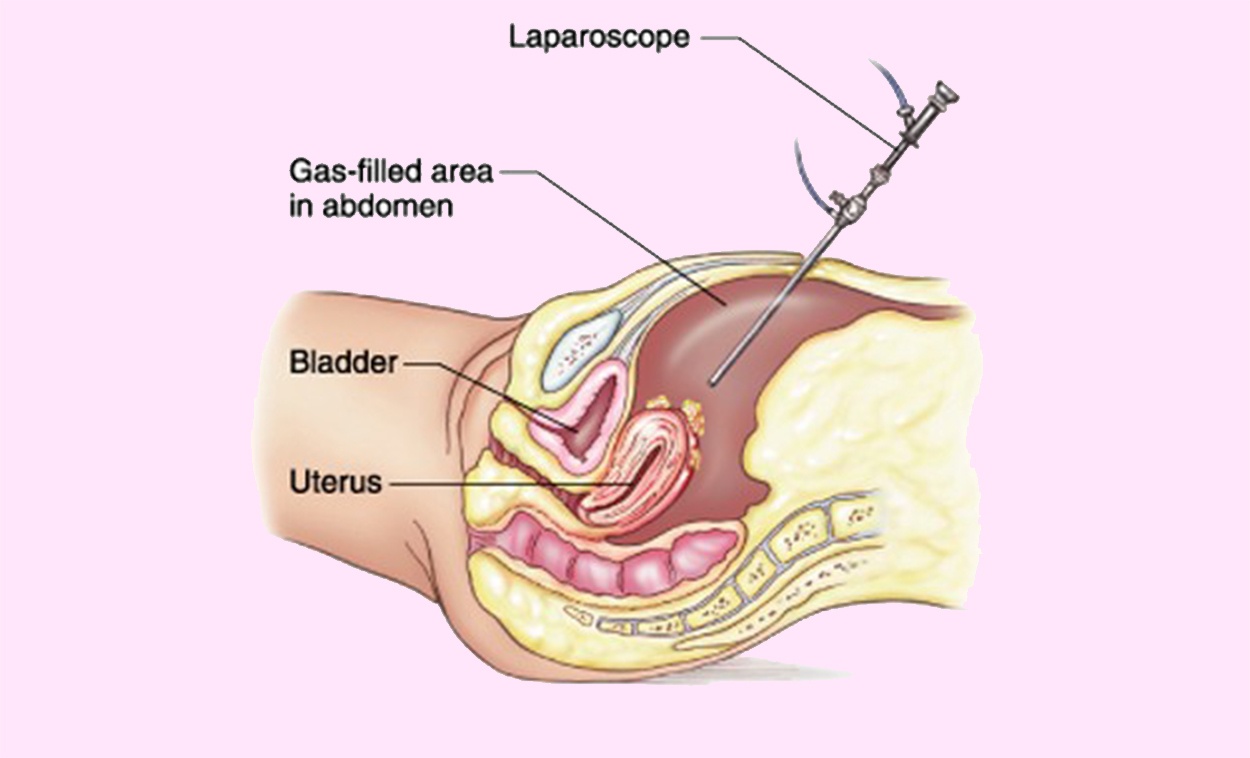Laparoscopy Hysteroscopy
At Sneh Hospital & IVF Center, our expert surgeons and physicians do perform endoscopy with the specialized instruments. Endoscopy allows the surgeon to view and operate the internal organs and vessels of your body without making large incision. It is non-surgical and non-invasive procedure. It is useful in investigating areas like Respiratory tract, ear, urinary tract, gastrointestinal tract, through a small incision, female reproductive tract
Laparoscopy and Hysteroscopy are the plans of action to conduct the complete examination of women’s inner pelvic structure, this scrutiny comes up with crucial information concerning infertility and gynecologic disorders. Problems that are out of the question to discover by physical examination, no matter whether for determining and recognizing the disorder or for operating purpose, can be done by the way of laparoscopy and hysteroscopy.
Option of diagnostic Laparoscopy, is to be put forward to have a look at fallopian tubes, ovaries, outer side of uterus and internal pelvic areas. Whereas, diagnostic hysteroscopy is recommended to have a look at internal uterine cavity.
Every so often, while performing the diagnostic procedure, if any peculiar condition is detected, then operative laparoscopy or operative hysteroscopy is to be performed in order to rectify it with the purpose to steer clear of another surgery.

Find elaboration of laparoscopy & Hysteroscopy :
Laparoscopy
At present, laparoscopy is a gold standard because it offers bird’s eye view and augmented view of pelvic and abdominal organs. Diagnosis and operation both can be performed by laparoscopy.
Well, laparoscopy is done by inserting a thin, flexible tube called laparoscope into abdomen through a small incision. For performing this, a small cut is to be made in your navel by surgeon. It is always performed under anesthesia. With the use of small needle, carbon dioxide gas will be filled in the stomach to keep abdominal wall away from your organs. Moreover, it reduces the risk of injury.
Laparoscope is a catheter, which has a high-resolution camera at the front, which transmits images to a video monitor. fallopian tubes, ovaries, outer side of uterus and internal pelvic areas can be clearly viewed by surgeon.
In case, there is need to perform surgery, then other required equipment’s will be inserted through these holes under the laparoscopy guide.
It is also called keyhole surgery or Band-Aid surgery.
This whole surgery is available at Sneh Hospital, we not only treat our patients but also pamper them until they get back to their comfortable situation. We here offer you the whole treatment in affordable cost.
- Benefits of Laparoscopy
- Lysis of uterine adhesions
- Ovarian cystectomy
- Treatment of endometrioses
- Myomectomy
- Fastest recovery
- Reduced risk of infection
- Risks of Laparoscopy
- Blood clots
- Damage to internal organs
- Hernia
- Abdominal infection
- Adverse reaction to anesthesia
- bleeding
Hysteroscopy
Hysteroscopy is just as the gem in the crown for managing infertility. Diagnostic and therapeutic both can be performed by hysteroscopy. It is an approach that permits the doctor to look inside the uterine cavity (Hystero means uterus and scopy means to see).
This is performed under general anesthesia. This procedure comes up with the important information inside the womb. By using a small telescope which has a camera on it, is called hysteroscope which is inserted through the vagina and cervix into the uterine cavity.
Hysteroscope transmits the images to video monitor, which allows the doctor to view issues related with uterus and fallopian tubes. Gas or fluid is often used in this to inflate the womb in order to give a better view to surgeon.
If there is need of operative hysteroscopy for surgery, then an endoscopic optical lens will be inserted through the vagina into the endometrial cavity to direct treatment such as biopsy, removal of polyps or other intrauterine treatments. It takes 10-30 minutes for whole procedure and rest depends on the situation.
It is a minimally invasive gynae approach. What more, the smaller diameter hysteroscopes has now permitted therapeutic hysteroscopy to become outpatient procedure which means the patient doesn’t need to stay at clinic for very long and can be perform in office setting.
- Benefits of Hysteroscopy
- Don’t need to stay long at hospital
- Avoidance of Hysterectomy
- Shortest time for recovery
- Can be performed in office setting
- Lower cost
- Avoid risk of trocar injury
- Risks of Hysteroscopy
- Infection
- Risk associated with anesthesia
- Reaction to the substances used for expanding uterus
- Intrauterine scarring
- bleeding
- Damage to vagina
Operative Laparoscopy & Hysteroscopy
- Removal of ovaries
- Ovarian cysts
- Endometriosis
- Pelvic tuberculosis treatment
- Adhesion removal
- Uterine fibroids
- Tubal ligation
- Ectopic pregnancy
- Removal Of Foreign Body
- Uterine Polyps
- Lysis Of Adhesions In C/O Asherman’s Syndrome
- Cannulation Of Fallopian Tube Ostia for Proximal Tubal Block
- Uterine Septum
- Submucosal leiomyomas
- Metroplasty
- As A Preventive Measure Before IVF Treatment
Diagnostic Laparoscopy & Hysteroscopy
- Diagnose the abdomen organs like fallopian tubes, ovaries, outer side of uterus and internal pelvic areas
- Diagnostic hysteroscopy is recommended to have a look at internal uterine cavity.
